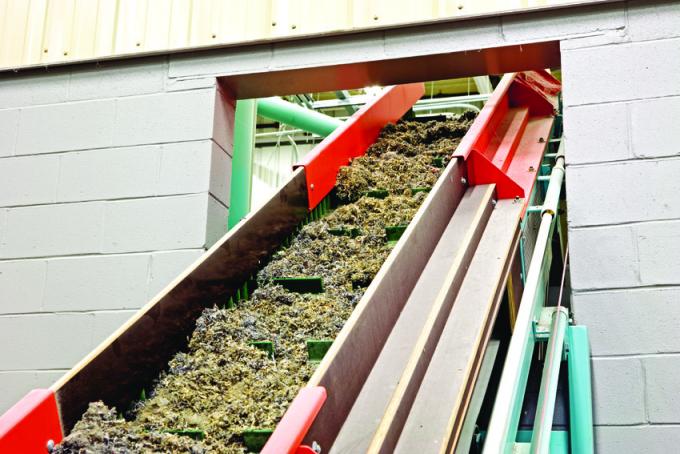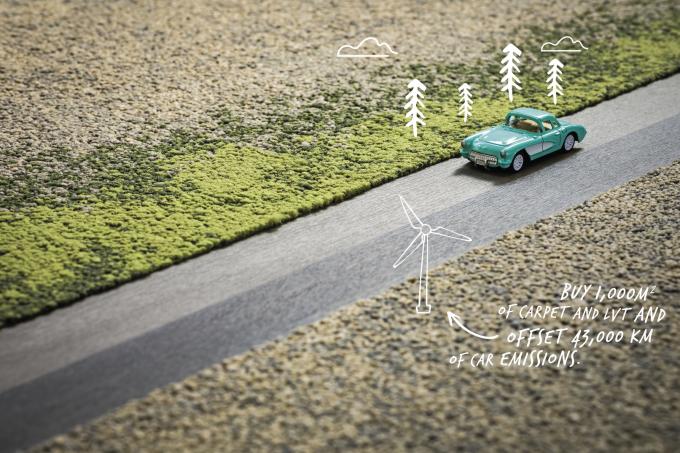Tell us about the sustainability philosophy at Interface.
Sustainability is deeply embedded in Interface’s business model. We are guided by the company’s purpose: Lead industry to love the world. This purpose is delivered upon by our business model, our company strategy and key initiatives that all address sustainability. We operate Interface using a multi-stakeholder business model where we focus on four key stakeholders—employees, customers, investors and the environment. Our strategy is to become the world’s most valuable interiors company by growing our business, driving efficiency in our supply chain, and leading a movement to reverse global warming. We have several key initiatives to deliver on this strategy, including making all of our products carbon neutral, a $60 million investment in recycled and bio-based backings for our products, and an initiative to operate our factory locations like high-performing ecosystems.

Did your company begin with these principles or did they evolve over time?
When Interface was founded in the early 1970’s, we did not have a focus on sustainability. In fact, we had not yet discovered our purpose. In 1994, a series of events, including questions from our customer base about what our company was doing for the environment, led our founder Ray Anderson to have an epiphany. He called it a spear in the chest moment. While reading the Ecology of Commerce by Paul Hawken, he became convinced our business had a greater purpose and so he set a bold vision of “zero negative environmental impact,” with the intention of becoming a restorative business. Twenty-five years later, we have come close to achieving many of our zero footprint goals, including things like reducing the greenhouse gas emissions by 96%, reducing waste to landfill by 91% and many others, and are now setting our sights on becoming restorative through our new mission to reverse global warming.
How do you market Interface’s “sustainability” to your customers? How have you gained customers’ trust?
In the early days, we purposefully did not market sustainability to our customers, fearing we would overdo it! We were deeply concerned about greenwashing, so we have always openly reported the negative impacts of our business, our goals to reduce these, and our progress and failures along the way. This transparency—and not overzealous marketing—has allowed us to gain the trust of our customers. We are very conscious of the option to use marketing to sell sustainability, and yet we prefer to use our marketing dollars to see the whole product, not just its green attributes.
We also verify and validate everything, and by transparently disclosing that validated work, we have gained credibility. Our focus and sense of purpose has driven us to be leaders in driving transparency across our entire industry. By developing Environmental Product Declarations (EPDs) to show all the ingredients in our products (think a nutrition label) and releasing them, competitors also have had to create and disclose EPDs, positively impacting the entire industry.

What advice would you give to intrapreneurs who want to successfully make a pitch for an “inclusive business” initiative to their senior management? Board?
First, there is a ton of data, from CEO surveys and GlobeScan reports to emerging student leaders, that sustainability is a core issue in business today. Whether it is climate risk that has to be understood and addressed in organizations, or the emerging opportunity associated with making and selling carbon neutral or carbon negative products, you can lean into this data to make a good argument. There is also a lot of data pointing to the fact that business school graduates want to work for a company that has a purpose beyond making or selling goods or services.
I think making your pitch is about showing those studies against the company strategy and asking, what opportunities are we missing around sustainability? And then, what risks are we not prepared for? At minimum you can ask for a first step, like an assessment of the biggest opportunities that might exist in your company to address sustainability.
Who are the other key stakeholders intrapreneurs should engage when “making the business case” for sustainability?
It depends on your organization, but the senior leadership team support is critical. An unconventional and often ignored ally is Human Resources, which can see the value of engaged employees who can connect to a purpose-led organization and know the value of that engagement. Similarly, the Research and Development teams are usually packed full of innovative thinkers looking for challenges and problems to solve. Once those innovators are engaged, even on tiny pilot or test projects, you are moving in a good direction.
Is there anything you would still like to add?
Start small, and don’t get overwhelmed by not having a fully-connected model like the one I described. It took us 25 years to get there. While we started with tackling waste, this taught us to how to rethink and how to engage and connect our employees. Then we could move onto harder challenges. Sustainability is something you learn by doing.
Additional Resources:
- All In: The Future of Business Leadership - Grayson, Coulter & Lee
- Mid-Course Correction: Toward a Sustainable Enterprise: The Interface Model - book written by Interface Founder Ray Anderson
- Natural Step: Interface Case Study